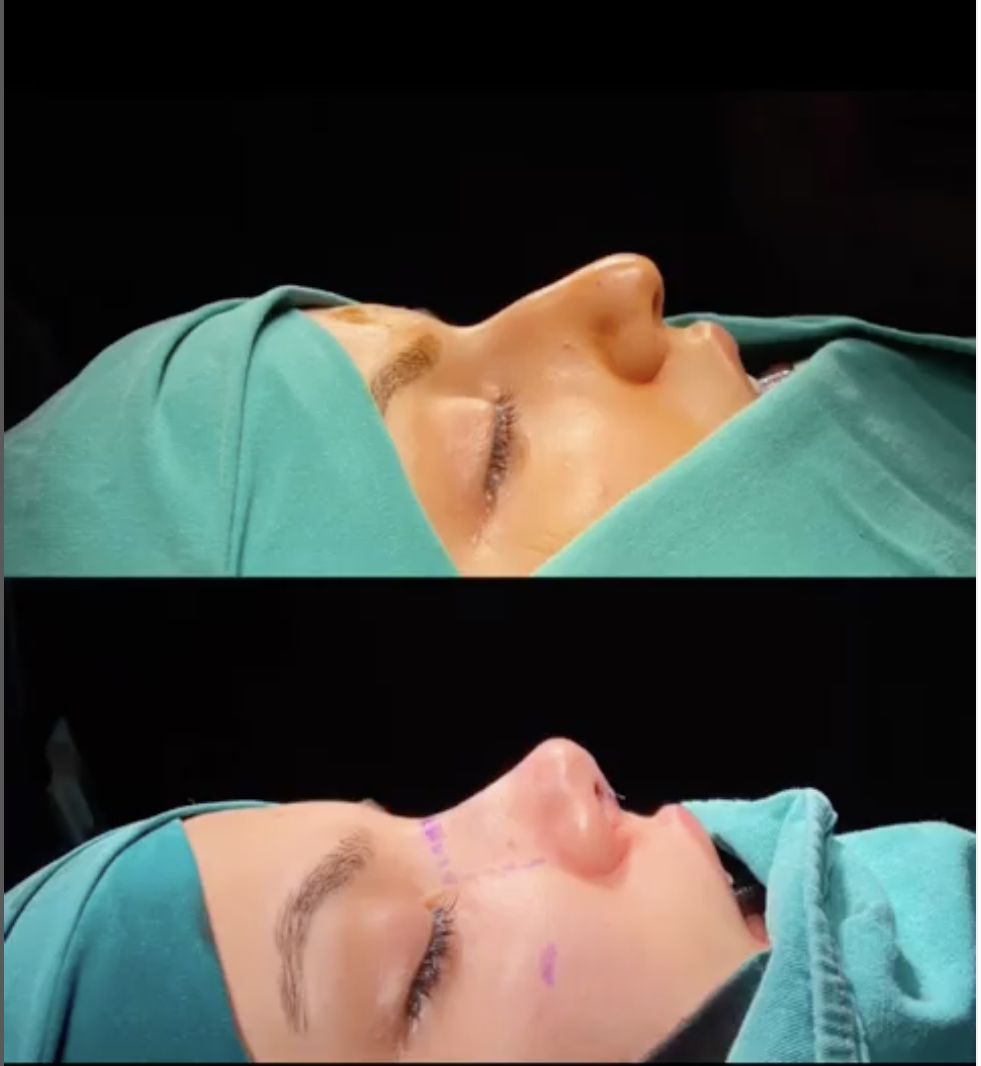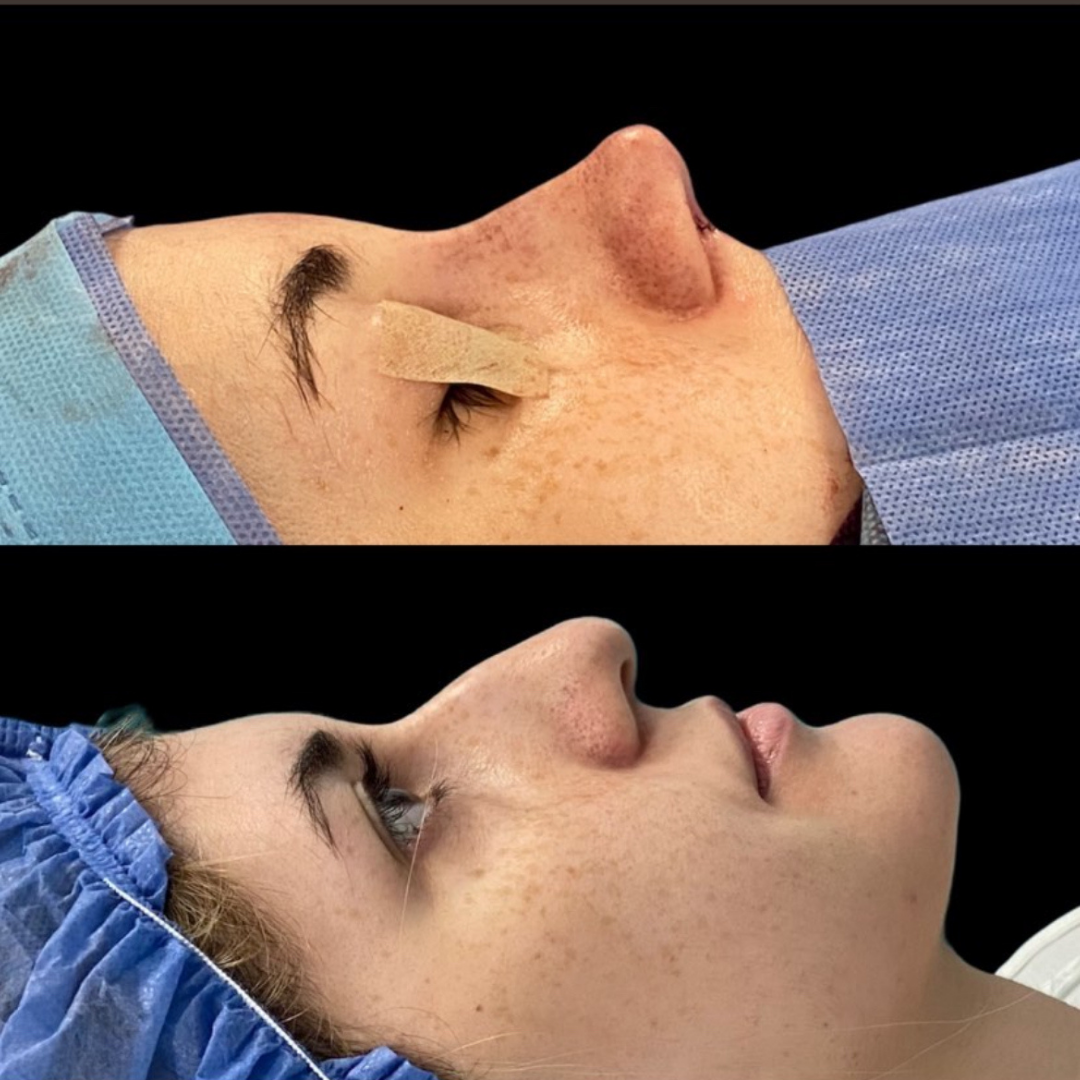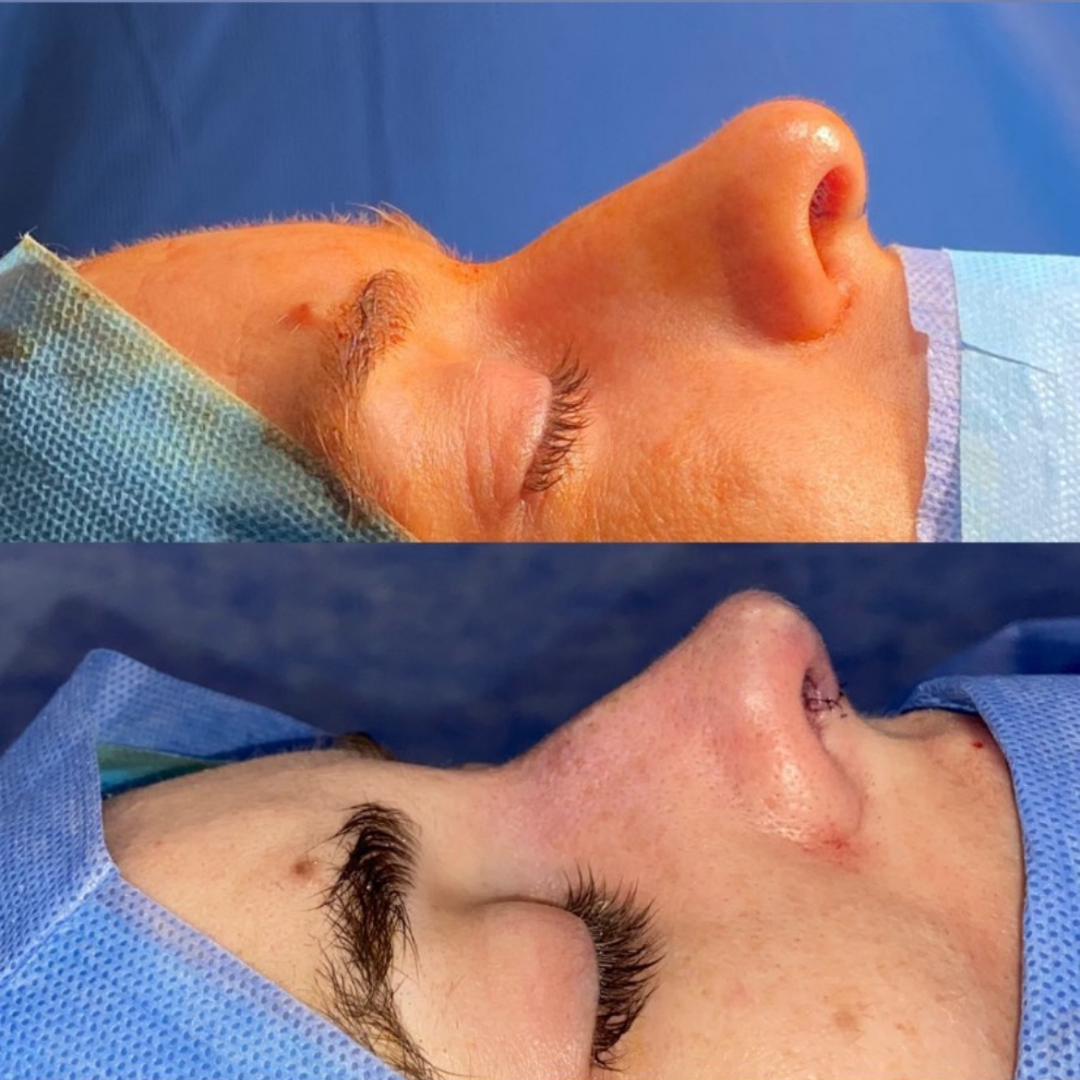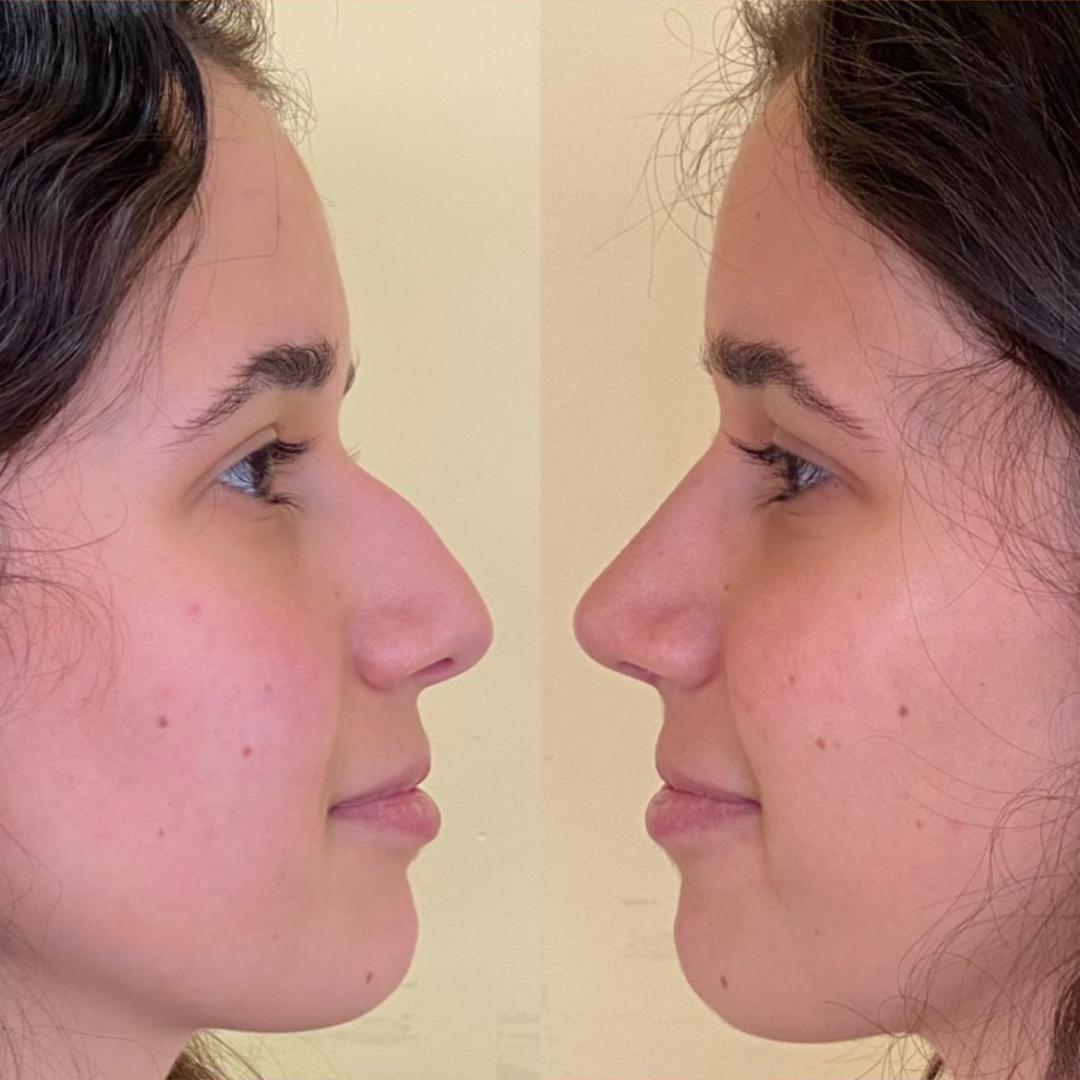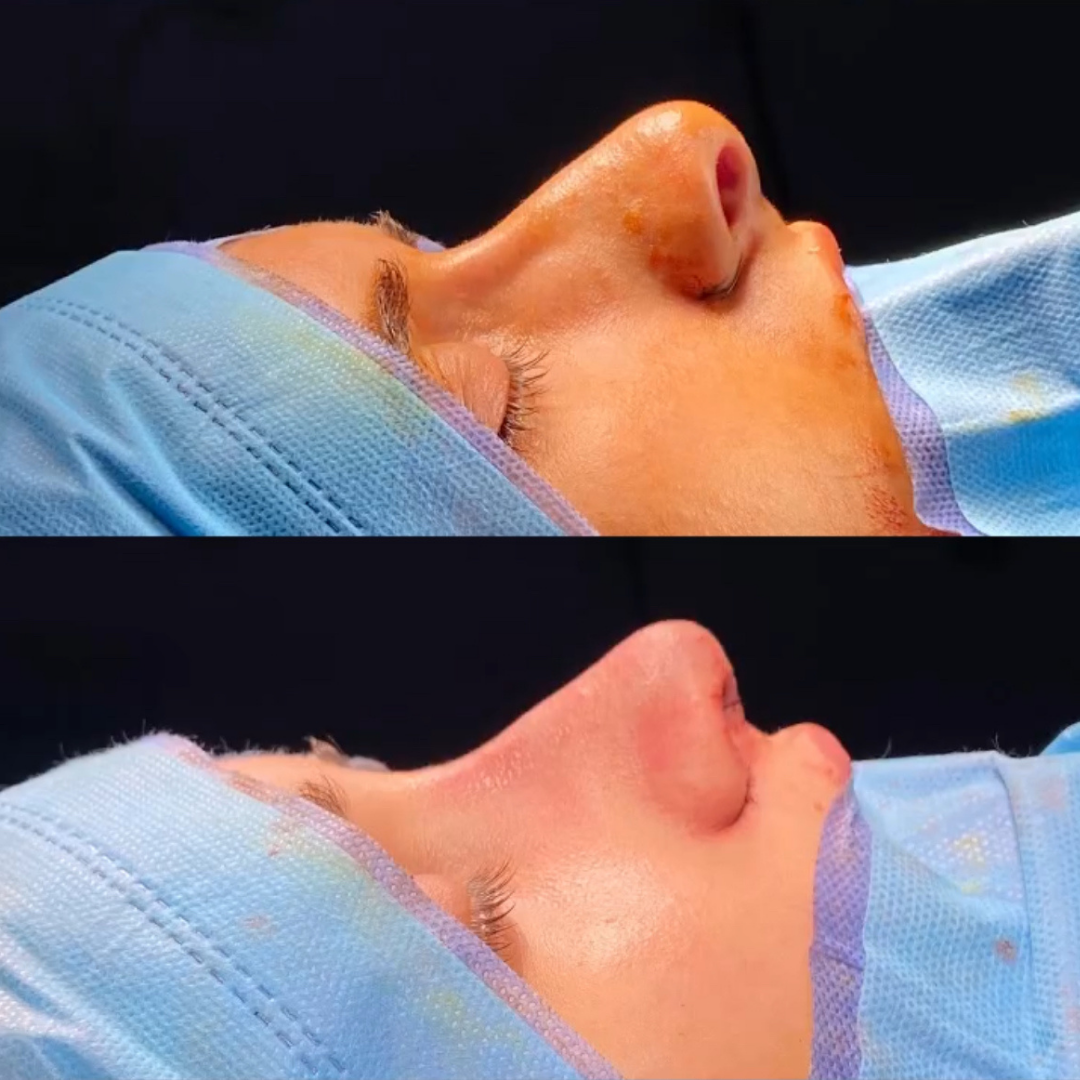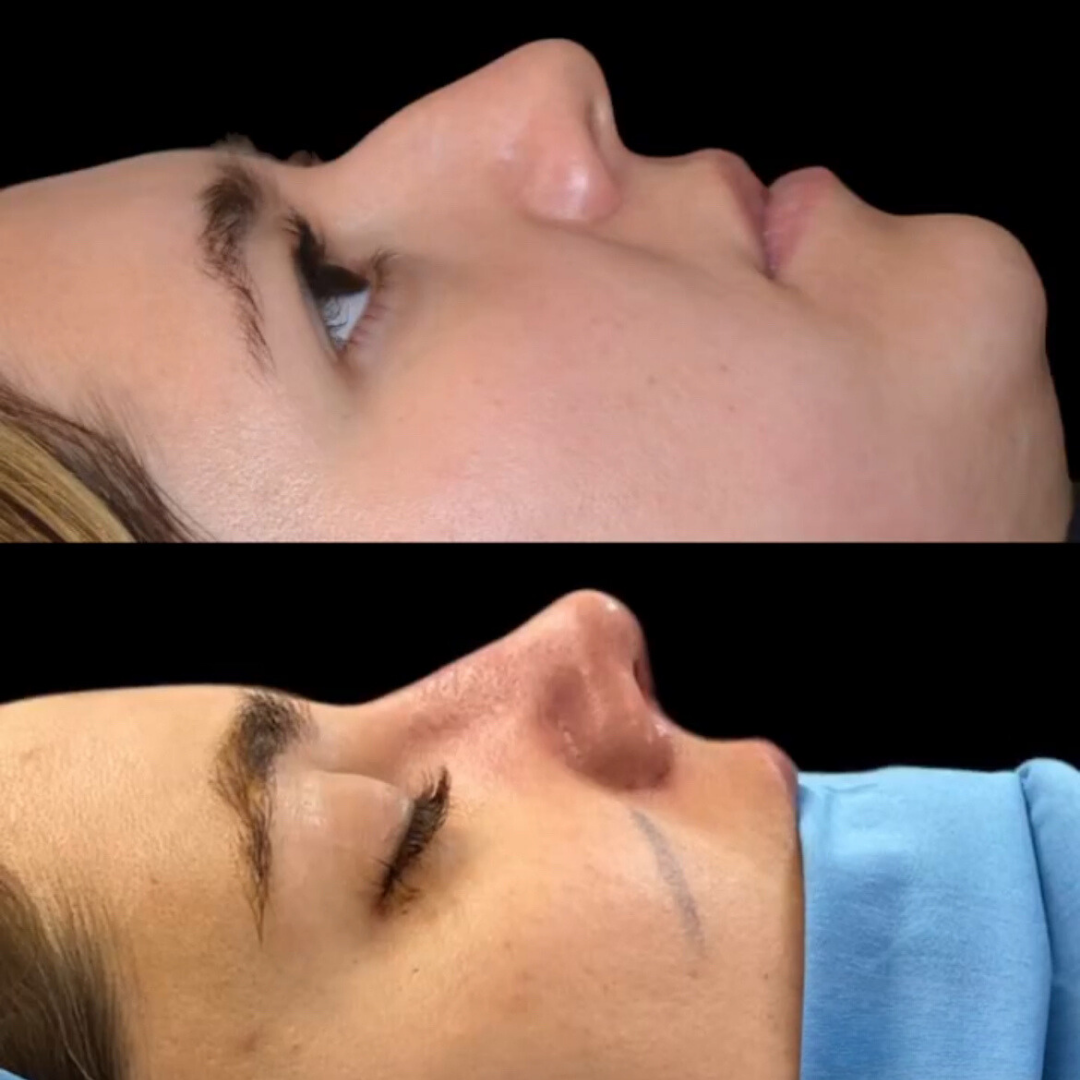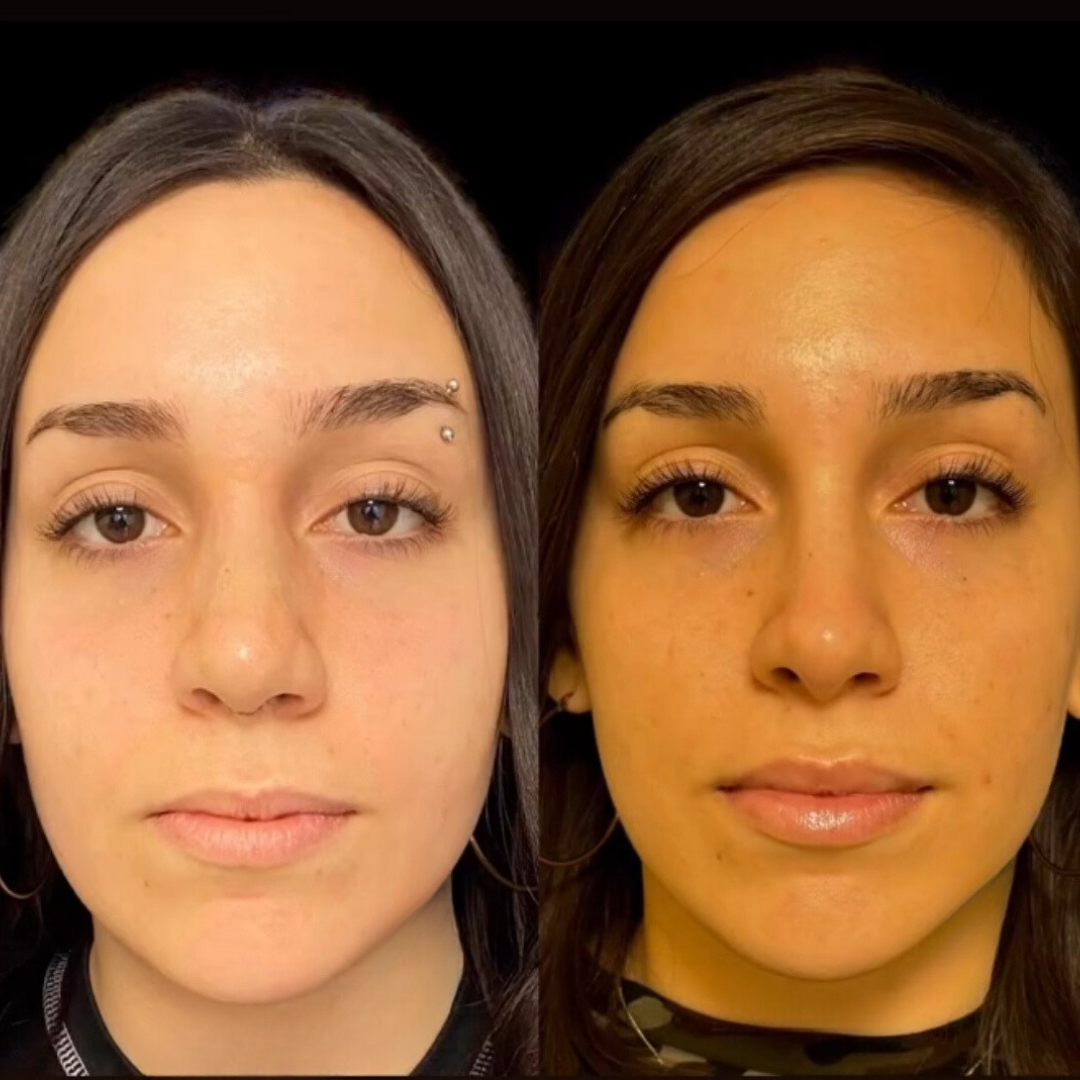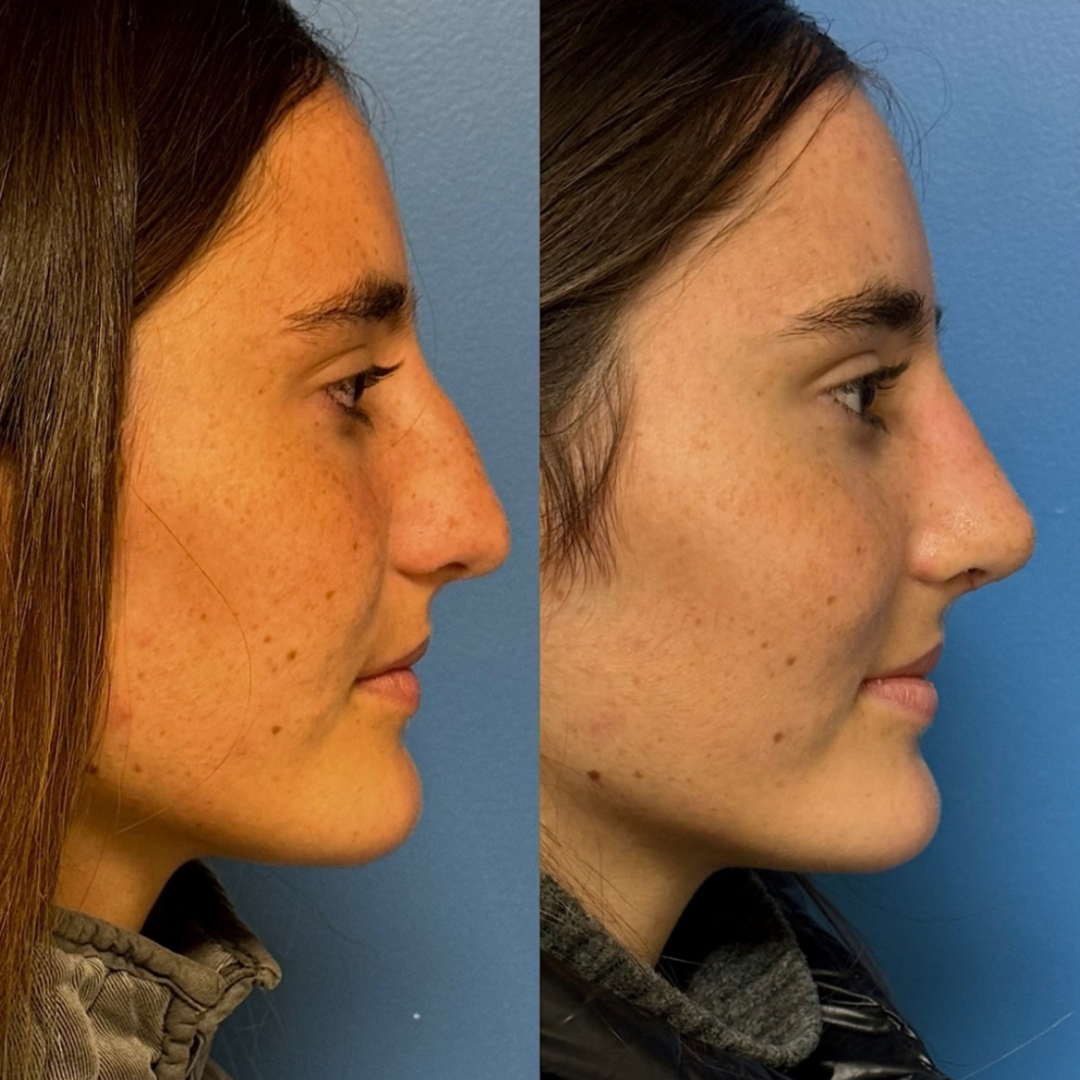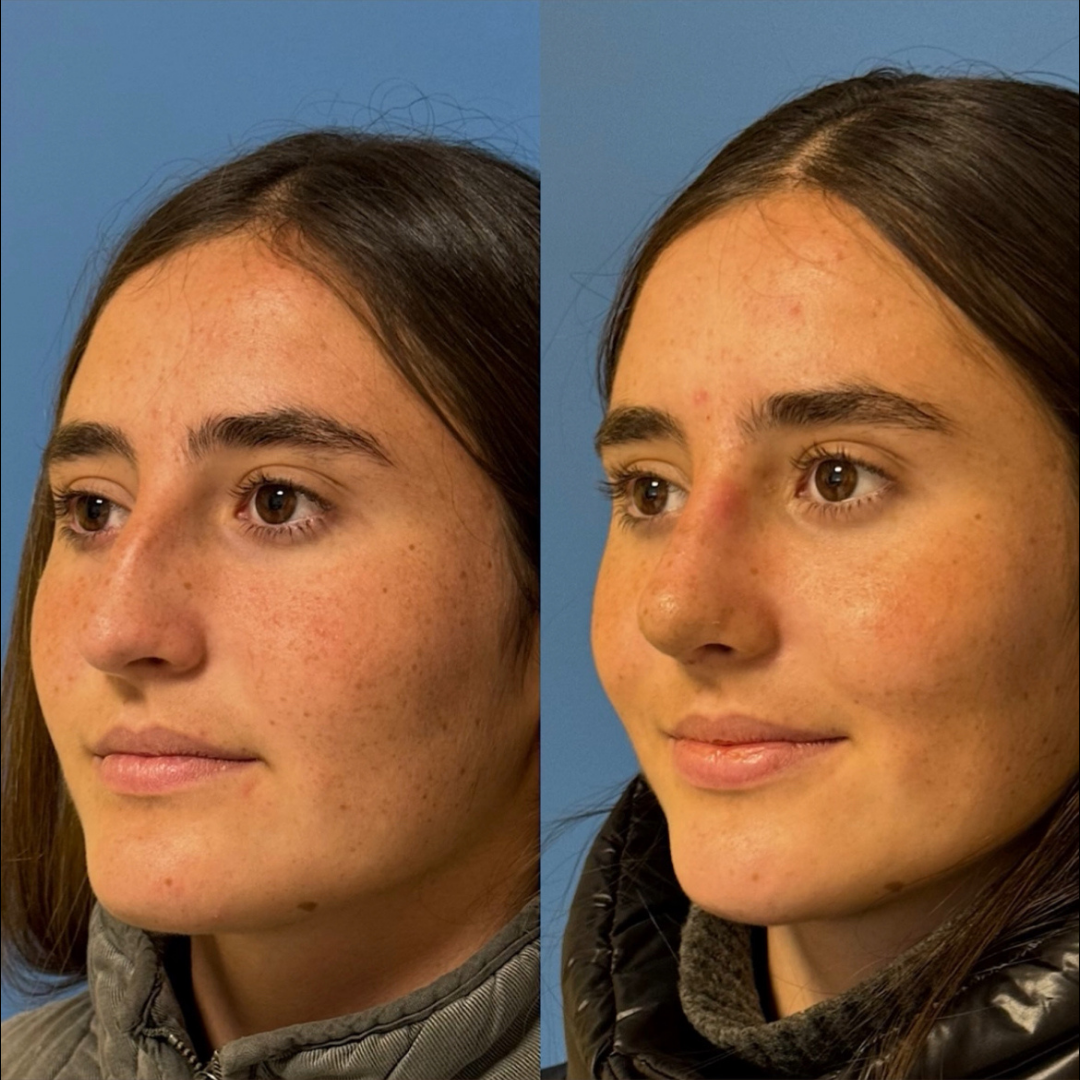Sculpting Your Ideal Profile
Rhinoplasty
Rhinoplasty, commonly referred to as a nose job, is a sophisticated surgical procedure aimed at reshaping or resizing the nose to enhance facial harmony and functionality.
This versatile procedure can address aesthetic concerns, such as a prominent bump or asymmetry, as well as functional issues, like breathing difficulties.
At Estedica, our experienced surgeons utilize advanced techniques to deliver natural and harmonious results that align with your aesthetic goals.
Investment
Low
Med
High
Recovery Time
1 Day
90 Days
Number of Treatments
1 procedure
Your Guide to The Journey Ahead
-
Ideal candidates for rhinoplasty include individuals who are:
Dissatisfied with Nasal Aesthetics: Those unhappy with the shape, size, or proportion of their nose.
Experiencing Breathing Issues: Individuals experiencing breathing difficulties due to structural abnormalities.
In Good Overall Health: Candidates who are in good general health and have realistic expectations about the results.
At Mature Growth Stage: Typically, individuals who are at least 16 years old, ensuring that facial growth is complete.
Looking to GainSymmetry: Those seeking to improve facial symmetry and balance.
-
Estedica’s partner surgeons offer a variety of rhinoplasty techniques to cater to diverse needs and goals:
Open Rhinoplasty
This technique involves an incision across the columella (the narrow strip of tissue between the nostrils) allowing the surgeon to lift the skin off the tip of the nose and sculpt the cartilage with precision. This method is ideal for more extensive reshaping and offers detailed visibility.
Closed Rhinoplasty
Performed with incisions hidden inside the nostrils, this technique leaves no visible scars. It is suitable for patients requiring minor adjustments and generally involves a shorter recovery time.
Revision Rhinoplasty
For those who have had previous nose surgeries but are dissatisfied with the results, revision rhinoplasty corrects or improves upon earlier procedures. This complex surgery requires advanced expertise and careful planning.
Functional Rhinoplasty
Primarily aimed at improving breathing issues caused by structural problems, this procedure can also offer aesthetic enhancements as a secondary benefit.
Ethnic Rhinoplasty
Tailored to the unique nasal structures of different ethnic groups, this procedure enhances the nose while preserving the patient’s ethnic identity. It requires a deep understanding of the cultural and anatomical nuances.
Ultrasonic Rhinoplasty
Utilizing advanced ultrasonic technology, this technique allows for precise bone reshaping with minimal trauma to the surrounding tissues. It results in less bruising and a quicker recovery.
Bulbous Nose Rhinoplasty
It is a specialized aesthetic procedure designed to refine and harmonize the nose with the rest of the face. This surgery focuses on reshaping the nose tip, which may appear swollen, rounded, or overly wide due to factors such as excessive cartilage width, over-spread cartilage, or a lack of clear definition.
-
Opting for rhinoplasty at Estedica provides numerous advantages, including:
Enhanced Facial Harmony: Achieve a more balanced and proportional facial appearance.
Improved Breathing: Correct structural issues that cause breathing difficulties, enhancing overall quality of life.
Boosted Confidence: Increase self-esteem with a nose that complements your facial features.
-
Rhinoplasty typically takes 2 to 4 hours, depending on the complexity of the procedure and the specific techniques used.
-
Initial recovery takes about 1 to 2 weeks, with most clients returning to normal activities; however, full healing and final results may take up to 12 months.
The recovery process after rhinoplasty involves gradual healing as the nose adjusts to its new shape. While individual timelines can vary, here is a general overview of the typical stages of recovery:
1. The Initial Days
The first few days after surgery are marked by swelling, bruising around the nose and eyes, and some discomfort. The nose may feel congested, and a splint is typically placed to support the new structure. Mild bleeding or drainage from the nostrils is common during this time.2. Week One
By the end of the first week, swelling and bruising begin to diminish, and many patients feel more comfortable. The nasal splint is usually removed during this stage, revealing an early glimpse of the results. Breathing may still feel restricted as the internal swelling persists.3. Weeks Two to Four
Swelling and bruising around the nose and eyes continue to subside. Most patients are able to return to light activities, though strenuous exercise and activities that could impact the nose remain restricted. While the majority of external swelling resolves, the nose is still in the early stages of healing.4. Months Two to Three
At this stage, most visible swelling has resolved, and the nose begins to take on its new shape. Internal healing continues, and the nasal structure stabilizes. Subtle improvements become more noticeable as the healing progresses.5. Long-Term Healing
Final results from rhinoplasty may take up to a year to fully materialize, as residual swelling, particularly in the nasal tip, gradually fades. The nose settles into its final shape, showcasing the refined contours and symmetry achieved through the procedure.Rhinoplasty recovery is a gradual process that requires patience, with each stage bringing visible progress toward a more balanced and harmonious appearance.
-
Generally, rhinoplasty requires an overnight stay in the hospital, followed by a 7 to 10-day stay at a hotel to ensure proper recovery and to attend follow-up consultations.
-
Commonly related procedures include chin augmentation, septoplasty, and facial fat grafting, blepharoplasty, and brow lift to enhance overall facial harmony and balance.
BEFORE AND AFTER
The Procedure
-
A comprehensive consultation is the first step, where we discuss your aesthetic goals and medical history in detail. This allows us to develop a personalized treatment plan tailored to your unique needs and expectations.
-
To ensure your comfort throughout the procedure, local or general anesthesia is administered. The choice of anesthesia depends on the complexity of the surgery and your preferences, which will be discussed during your consultation.
-
The type of incisions made during rhinoplasty depends on the chosen technique. In a closed rhinoplasty, incisions are hidden inside the nostrils, resulting in no visible scarring. In an open rhinoplasty, an incision is made across the columella (the narrow strip of tissue between the nostrils), allowing the surgeon better visibility and access to the nasal structure.
-
RESHAPING
The underlying bone and cartilage are meticulously reshaped, removed, or repositioned to achieve the desired nasal contour and functionality.
Techniques used may include:
Cartilage Grafting
Using cartilage from your septum, ear, or ribs to enhance or reconstruct nasal structures.
Osteotomy
Carefully fracturing and repositioning nasal bones to narrow or straighten the nose.
Tip Refinement
Sculpting the nasal tip to improve its shape, definition, and proportion.
-
Once the reshaping is complete, the incisions are meticulously closed with sutures. Our surgeons take great care to ensure minimal scarring and optimal healing. If necessary, internal supports such as splints or soft packing may be used to maintain the new shape during the initial healing phase.
-
Detailed post-operative care instructions are provided to facilitate a smooth recovery. You will have scheduled follow-up appointments to monitor your healing process and ensure the best possible results. Swelling and bruising are normal initially but will subside over time, revealing the final refined shape of your nose.






